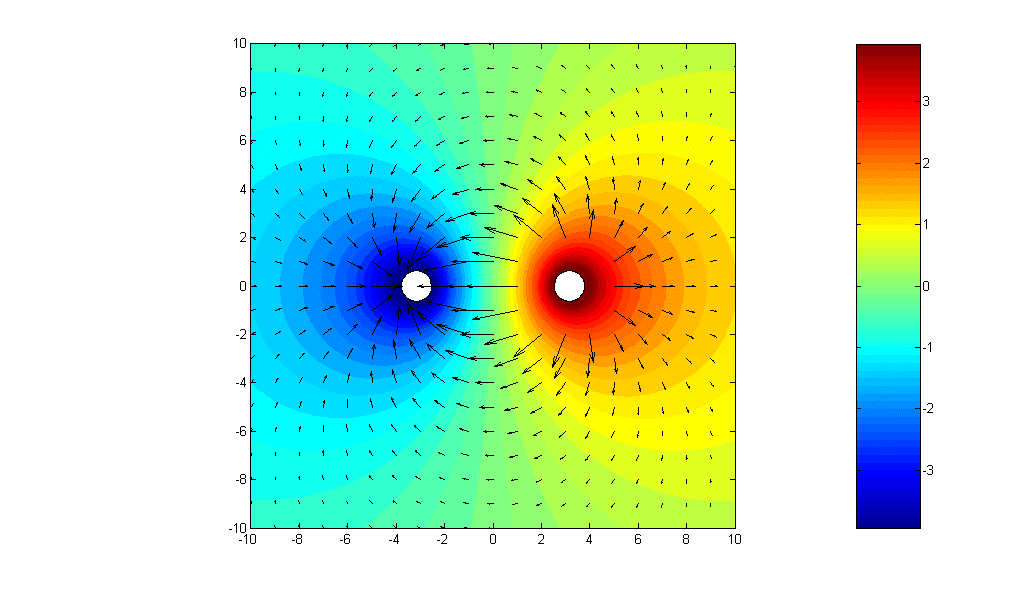EQS Solution in
Parallel-Wire Line
Editor:張祖恩、張凱崴、曾冠傑
Advisor:江簡富 教授

Demonstration
Consider an
infinitely long, straight-line charge with uniform density of ![]() C/m along the
z-axis, as shown in Fig.1. The symmetry of the problem indicates that the
potential only depends on the cylindrical coordinate
C/m along the
z-axis, as shown in Fig.1. The symmetry of the problem indicates that the
potential only depends on the cylindrical coordinate ![]() . Thus, we have
. Thus, we have
![]()
![]()
where A and B are constants to be determined. Set the potential arbitrarily to
be zero at a reference ![]() . Thus,
. Thus, ![]() and
and
![]()
Apply the electric Gauss’ law to the cylindrical tube in Fig.1 to have
![]()
Thus, we have ![]() and
and
![]()
Next, Fig.2 shows
two infinitely long, straight-line charges of equal and opposite uniform charge
densities ![]() C/m and
C/m and ![]() C/m,
respectively, parallel to the z-axis and passing through
C/m,
respectively, parallel to the z-axis and passing through ![]() and
and ![]() , respectively. By superposition, the potential due to the
two line charges is
, respectively. By superposition, the potential due to the
two line charges is
![]()
where ![]() and
and ![]() are the distances from the point of interest to the line
charges,
are the distances from the point of interest to the line
charges, ![]() and
and ![]() are the distances from the line charges to the reference
point at which the potential is zero. By choosing the reference point to be
equidistant from the two line charges, we have
are the distances from the line charges to the reference
point at which the potential is zero. By choosing the reference point to be
equidistant from the two line charges, we have ![]() , and
, and
![]()
The equipotential surface for the potential field is given by
![]()
where k is a constant lying between 0 to ∞.The equipotential surface in the Cartesian coordinates can be expressed as

or

The associated potential of the equipotential surface is
![]()
Note that there is no electric field inside both parallel-wire lines.
To obtain the EQS
solution, simply change ![]() to
to ![]() , which is a time-harmonic.
, which is a time-harmonic.
Choose ![]() =2 C/m, b=3 m, radii of the wires = 0.3 m
=2 C/m, b=3 m, radii of the wires = 0.3 m

